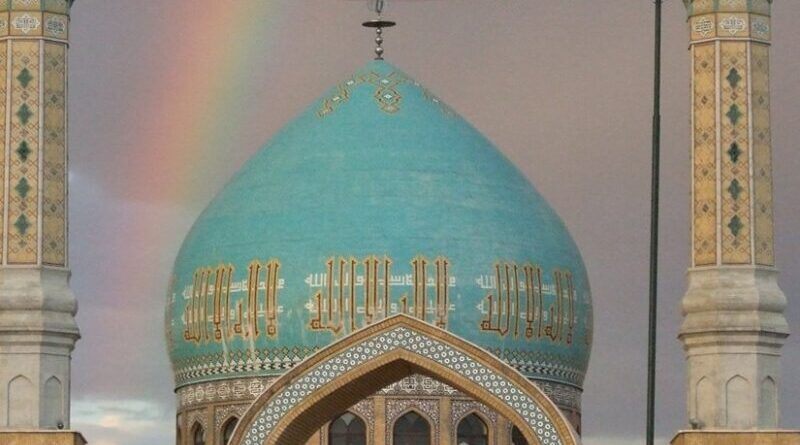The Civilizational Paradox Of Shared Heritage And Warfare – Analysis
In the recorded history of mankind, many civilizations have come to exist, thriving for generations before falling into decay and eventually dying out. While some have been forgotten over time, others are remembered more vividly even today, thanks to the practice of extensive record keeping which commenced with the invention of writing on cuneiform tablets in ancient Mesopotamia, papyrus in Egypt and culminating in the introduction of paper by the Chinese.
Multiple aspects of civilizational history, be it political, social, religious or intellectual came to be recorded widely as various civilizations progressed. The quest for search of ancient materials and records continues even in current times for the purpose of study by scholars across the world in order to try and improve man’s understanding of the world inherited from past generations. While political, social and religious history of a place could be influenced or skewed by the ideology of its patron who usually was a reigning king or emperor, intellectual knowledge has traversed beyond the boundaries of petty power politics considering the fact that it was aimed at solving universal problems of life and not restricted to a particular empire or class of people.
![Hammurabi (standing), depicted as receiving his royal insignia from Shamash (or possibly Marduk). Hammurabi holds his hands over his mouth as a sign of prayer[1] (relief on the upper part of the stele of Hammurabi's code of laws). Photo by Mbzt, WIkipedia Commons.](http://www.eurasiareview.com/wp-content/uploads/2017/09/b-36-241x300.jpg)
Hence, a legacy which continues to live on long after a civilization ceases to exist is the contribution it has made towards the progress of intellectual human history. Progress and advancement attained by mankind since ancient to the modern times has been a collective human endeavor, bypassing the barriers of civilizational, political, religious, cultural and racial rivalry. Highest standards of scholarly work produced on subjects such as science, medicine, mathematics, astronomy, astrology, logic, philosophy and literature surpasses the narrow boundaries of empires and territories, leading to overall improvement in the quality of human existence. The baton of scholarship has continued to pass on from the arms of an aging civilization to the one in ascendance which has allowed mankind to continue making progress throughout history.
Succeeding civilizations have gone on to improve and build upon the works of their predecessors by preserving and studying writings produced on multiple subjects. From the age of cuneiform tablets to the introduction of paper, whether it was the ”Code of Hammurabi” from ancient Babylon, the first ever written law code or Brahmagupta’s magnum opus “Brahmaphut-siddhanta” which influenced Al Khwarizmi’s mathematics or even the fables of “Kalila-Wa-Dimna”, the Arabic version of ancient Indian texts of “Panchatantra”, ideas have traveled far and wide by breaking the shackles of political boundaries.
Had it not been for the preservation of Greek philosophy and ideas by medieval Islamic scholars through the famous “translation movement” during the Abbasid era, the history of European renaissance and enlightenment as we know today would have been a very different story.
Just as ancient Greeks cannot deny the importance of Babylonian ideas in shaping Greek sciences and Arabs cannot overlook the importance of Greek, Indian and Persian contribution towards their progress, similarly it would be naive to ignore the contribution of medieval Islamic civilization towards the advancement of modern western civilization. A famous Sanskrit phrase from the Maha Upanishads “Vasudhaiva Kutumbakam,” which means, the world is one family might seem like a distant dream when it comes to the political, religious and social history of the world, but holds true in the case of intellectual human history.
Along with the history of shared intellectual heritage, “religious syncretism” has also been an important force of unification for mankind since ancient times. The assimilation of a new religion and its beliefs with the customs and traditions of regions where it spread produces a unique fusion that lends credence to not only the new faith being introduced, but also keeps the local customs and practices in tact, which may have existed for centuries. In the annals of history, there are multiple examples of the successful assimilation of a religion with local customs which has led to the formation of peaceful and harmonious societies. An obvious example would be the Islamic or Jewish Mysticism or even Christian Gnosticism, which has given importance to the spiritual aspects of religion vis-a -vis the ritualistic and have been seen as a powerful force preaching unification of humanity.
A visit to famous Sufi dargahs across Asia will bring to one’s notice a display of local customs such as lighting of oil lamps and putting palm-imprints of sandalwood paste on flags before hoisting them, a practice that is a continuation of pre-Islamic customs in places such as Tamil Nadu and Sri Lanka. Moreover, people of all different faiths are free to visit these dargahs irrespective of their belief system. Millions of Hindus, Christians and Muslims visit these dargahs regularly during the annual Urs festival across India exhibiting communal harmony.

Similarly, Kabbalah (or Jewish Mysticism) and Sufism are quite similar to each other as both systems practice worshiping by becoming completely absorbed in the repetition of the name of God (known as dhikr in Islam), accompanied by musical and physical exertions which can last for hours at a stretch.
A lesser known example of religious fusion is that of the “Satpanthis” which means true followers, who are a group of Ismaili Sufis. They have syncretized their practices with the customs of Hinduism after conversion to Islam by Islamic saint Pir Sadruddin (1290-1367) almost 700 years ago and continue to coexist with other faiths in India. Similarly, the Ahmadiyya Muslim community whose practices and beliefs have been deemed heretical by mainstream Muslims is another vivid case of an attempt made to syncretize Hinduism and Sikhism with Islam.
Other examples of syncretistic movements in the east would be a) Manichaeism, which spread into ancient Persia and came to be found as an amalgamation of ideas taken from Christianity, Zoroastrianism, Buddhism and, b) Sikhism, which combined elements of Islam and Hinduism, hence giving it a unique identity.
Buddhism is another interesting case of successful religious and cultural blending. A primary reason for the survival of Buddhism even after facing severe religious persecution in Nalanda at the hands of white Huns and Muhammad Bakhtiyar Khilji has been its willingness to adapt and syncretize its practices with elements of Shinto, Taoism, Confucianism and Korean shamanism to make it compatible with the prevailing cultural practices of East Asian countries it moved into eventually.
The experience of persecution in India is one of the primary reasons for Buddhism having shifted its base towards the periphery of India leading to a much larger presence in countries such as China, Korea, Burma and Sri Lanka even though the country of its origin was India. According to a census conducted in 2011, out of a global population of 495 million Buddhists only 8.5 million reside in India, which is less than 2 percent of the followers of Buddhism.
 The use of prayer beads and the practice of circumambulation is a perfect example of ritualistic syncretism across all religions. Although the exact history of the origin of prayer beads is unknown, earliest historical references lead to its origination in Hindu prayers, a concept that was borrowed by Buddhism later on. Famous medieval Islamic saint, Hasan Al Basri is known to have introduced prayer beads into Islamic religious practices in the 8th century.
The use of prayer beads and the practice of circumambulation is a perfect example of ritualistic syncretism across all religions. Although the exact history of the origin of prayer beads is unknown, earliest historical references lead to its origination in Hindu prayers, a concept that was borrowed by Buddhism later on. Famous medieval Islamic saint, Hasan Al Basri is known to have introduced prayer beads into Islamic religious practices in the 8th century.
Similarly, the practice of ”circumambulation” which is an act of moving around a sacred object or idol is common practice in all major religions such as Hinduism, Buddhism, Sikhism, Judaism, Christianity and Islam although ritualistic practices might vary across different faiths. Human history holds testimony towards various attempts made to unite humanity in the realm of religion and intellectual scholarship even though these attempts may seem insignificant to the modern eye considering the bloodshed and division that exists today.
Unfortunately, syncretistic movements have always been seen as a threat to mainstream religious practices and therefore have been a target of political persecution by kings and rulers throughout history who preferred to use mainstream religions as a tool for achieving political unification of its subjects against rival civilizations. Very rarely in history have syncretistic religious forces received political patronage for reasons that are obvious.
An insatiable human quest for power and domination over others has been one of the major reasons in undoing the efforts made to unify mankind.The history of empires and its rulers has been one of mass bloodshed and brutality in order to achieve territorial and economic goals while using religion as a prime force for political unification of territory and in the process distorting the essence of faith being propagated to suit political goals.
Distorted accounts of history have been written with the intention of highlighting chapters and events which gave prevailing powers of the era an aura of superiority over their contemporaries or rivals in the eyes of posterity. Attempts have been made to go to the extremes of wiping out the history of enemies completely by burning and destroying records in order to put a break on continuity of rival civilizations which sows the seed of a cyclical process of avenging injustice done when the fortunes are reversed as has historically been the case.

According to a recent survey, out of approximately 7,000 world languages that exist in the world today almost fifty percent are expected to die out by the end of 21st Century primarily under the influence of more dominant cultures and languages, a pace which is much faster than the extinction of species.
While in medieval times, languages of conquered lands were consciously replaced by that of victors leading to its gradual but progressive extinction, in modern times the force of globalization has been a major reason for replacement of native languages with the ones which are more universal in nature.
Civilizations have been silent victims of aggression perpetrated by political forces who are self acclaimed torch-bearers or representatives of their subjects, fighting a rival empire in order to fulfill political ambitions. As the famous American biologist, Edward. O. Wilson, who is also known as the father of sociobiology and biodiversity says, “War is humanity’s hereditary curse.”
The first recorded war in history was held in Mesopotamia in 2,700 (BC) between Sumer and Elam, a legacy which is carried forward to the modern day by US coalition’s invasion of Iraq in 2003 (CE). According to extensive study undertaken in human psychology, a plethora of reasons have been attributed to the launching of wars such as desire for territorial or economic gains, ambitions to dominate other cultures, forceful imposition of religious beliefs, civil wars or even avenging a past historical humiliation.
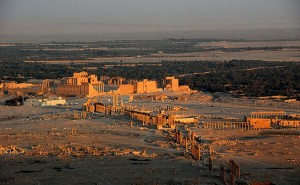
Thanks to advancement in technology and industrialization in modern times, wars have become much more deadly, destructive and geographically widespread than they have ever been in the past. All wars come at a heavy price, which may not be confined to humanitarian, social and economic aspects alone. Instead, a much more lasting and long term damage is inflicted by the destruction of historical and cultural heritage of the lands and people attacked. Such destruction of ancient monuments, manuscripts, libraries and archaeological sites inflicts an irreversible and permanent damage on a civilization which cannot be resuscitated by doling out packages of economic reconstruction as witnessed more recently in Iraq.
At times, such damage is collateral in nature but in certain cases where the enmity between two sides is more historic and deep-rooted there is a conscious attempt made to wipe out history of rivals which lends a sense of continuity to civilization and its people. Thousands of world heritage sites, precious manuscripts and other pieces of literature have been consistently lost to warfare and vandalism.
Whether it was the blowing up of 6th Century Buddha statues at Bamiyan by Taliban in 2001 or the destruction of the great Al Askari mosque of Samarra and the famous Sumerian city state of Ur (which is also considered to be the birthplace of Abraham) in ancient Mesopotamia during the American invasion of Iraq, the loss to ancient heritage has been immense and irreversible.

Many sites of significance to Islam in modern Saudi Arabia have been consciously destroyed over the past couple of centuries, which includes mosques, tombs, cemeteries and other historical sites of religious significance. Mosques and tombs of important Islamic figures in early Islam such as Imam Jafar Al Sadiq, Salman Farsi, Fatima Zahra have been destroyed in modern times deeming the practice of visiting tombs and saintly intercession as heretic. Even Prophet Muhammad’s mother Amina Bint Wahb’s grave was bulldozed by the authorities in 1998. According to a British newspaper, The Independent, House of Mawalid where Prophet Muhammad is known to have been born is likely to be replaced by a huge royal palace, as part of a multi-million dollar construction project. These are just a few of many such sites of religious significance which have been destroyed over time.
Libraries have continued to lend voice to the history of various civilizations that have walked on this earth. Works preserved in these libraries have been invaluable in helping to carry out productive inter-civilizational dialogue which becomes even more important in a globalized but more polarized world of today. Literary and intellectual works of great ancient and medieval scientists, philosophers and mathematicians such as Galen, Aristotle, Ibn Sina, Al Farabi, Al Khwarizmi, Descartes and Immanuel Kant have continued to influence many generations from China in the east to US in the west and have continued to benefit mankind immensely thanks to the preservation of their works through libraries.
Translations of Buddhist religious texts by the great Buddhist scholar, Kumarajiva into Chinese allowed for the assimilation of Buddhist ideas and teachings into ancient China, which has allowed for the cross-pollination of Indian and Chinese civilizations. Similarly, Muhammad Ghawth Gwaliori’s Urdu translation of ancient sanskrit yogic texts of Amrita-kunda allowed for the fusion of yogic practices with Islamic sufism.
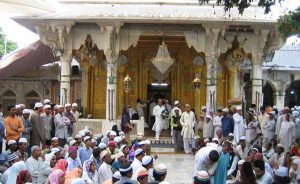
With all the benefits knowledge has accorded to mankind in the form of libraries, unfortunately even these reservoirs of knowledge have become targets of destruction during wars. More than 50 world-class libraries are known to have been pillaged, destroyed and vandalized in the course of past millennium which turns the work produced over centuries of research into heaps of ashes overnight.
In medieval Baghdad, House of Wisdom (also known as Bayt Al Hikma), was one of the best libraries of its time having a vast collection of books and manuscripts translated from Greek, Persian and Indian sources. Its racks were stacked with works of great authors such as Pythagoras, Hippocrates, Euclid, Aryabhata and other top scholars of the time. This was destroyed during the Mongol sack of Baghdad in 1258 and is considered by historians as one of the many spokes in the wheel of Islamic intellectual decline. The period followed by the disintegration of Abbasid Caliphate, also known as the “Iranian Intermezzo” gave rise to many smaller empires such as Buyids, Tahirids, Sallarids and Saffarids in Iraq and Iran which were previously under the subordination of Abbasids. With the Abbasids significantly weakened, these empires became more independent, becoming embroiled in continuous warfare among each other for political gains. Some very important libraries of the day possessing thousands of scrolls of scholarship were lost to this period of incessant warfare which included the Library of Ray, Ghazna, Nishapur and the library of great medieval Persian polymath, Avicenna. These acts of destruction were carried out by rival factions either for the purpose of erasing rival political history or pronouncing the works preserved in these libraries as heretical deserving destruction.
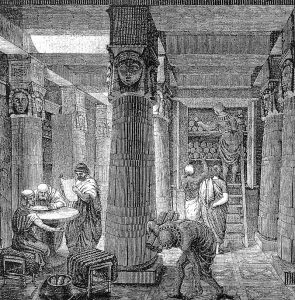
The Royal Library of Ancient Alexandria, which was one of the largest and most significant library in the ancient world and flourished as a major center of scholarship during the Ptolemaic dynasty, was lost to arson. It was known to have stocked approximately 400,000 scrolls of writings on topics as diverse as medicine, astronomy, mathematics, literature and philosophy. There are various conflicting accounts of how it was burned. While certain sources claim it was the army of Julius Caesar that set the great library on fire in 38 BC, others blame Aurelian (270 AD) for the destruction. Books, manuscripts, papyrus and parchments of knowledge accumulated over centuries of scholarship were lost overnight.
The Library of Nalanda in ancient India which was known as “Dharmaganja” (Piety Mart) was an architectural marvel of its time. It consisted of three multi-storied buildings known as Ratnasagara, Ratnodadhi and Ratnaranjaka. Among these, Ratnodadhi was nine stories in height and housed the most sacred Buddhist texts such as “Prajanyaparamita Sutra” and “Guhyasamaja.” It also housed a vast collection of texts on subjects such as medicine, astronomy, astrology and logic. This library became a victim of white Hun and Turko-Mongol invasions during ancient times. A Persian historian by the name of Min haj Siraj in his book “Tabaqat I Nasiri” gives an account of Muhammad Bakhtiyar Khilji’s invasion of Nalanda who under the orders of the ruler of Awadh destroyed and pillaged the monastery. Buddhism moved to the peripheries of India following this persecution while remaining a minuscule minority in India, which happens to be the country of its origin.
In modern times, an example of wide scale heritage cleansing that stands out vividly in the annals of history is the case of Iraq and Syria, which have not only been cradles of Islamic civilization but also ancient pre-Islamic Sumerian, Akkadian and Syriac history. Mesopotamian heritage is important not only for the Middle East, but equally relevant for the history of the entire world.
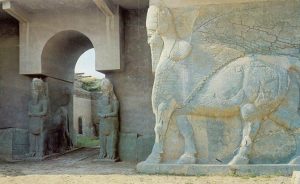
The damage inflicted on cultural heritage of Iraq and Syria with the commencement of “Operation Iraqi Freedom” has been unimaginable, a situation that has only worsened with the unending civil war following the American troop exit. Iraqis picture George W. Bush as a modern day reincarnation of Hulagu Khan, the famous Mongol ruler who sacked Baghdad in 1258 sending a once thriving civilization into precipitous decline.
Back in 2003, immediately after the American invasion more than 15,000 invaluable Mesopotamian artifacts in the national museum of Baghdad went missing along with thousands of others from multiple archaeological sites which were left unguarded post invasion. Unfortunately, many of these precious artifacts were smuggled and auctioned abroad by professional antiquity dealers while others were sold on the internet for great sums. Many futile attempts were made by members of Archaeological Institute of America to apprise the US State Department and Pentagon officials of the need to ensure deployment of tight security at museums and archaeologically important sites to protect the heritage from looting and pillaging but it was largely ignored.
Important sites of historical significance such as Ur, Babylon and Samarra were converted into military bases. The creation of bases required digging, bulldozing and carrying out excavation for plumbing and sewerage works that has led to serious damage of precious heritage on these sites.
Professor Elizabeth Stone, Professor of Anthropology at Stony Brook University analyzed satellite images of almost 2,000 sites in Iraq where she found extensive plundering and looting over an area of six square miles ranging from small towns to buried ancient cities by Iraqi looters bused in by antiquity dealers. Artifacts ranging from Babylonian seals to cuneiform tablets have disappeared by the thousands leaving empty dug-up pits. Most of these have landed in multiple countries across the world after being sold to businessmen, rulers and politicians for unimaginable prices becoming a piece of decor in their living rooms. According to Archaeological Institute of America revenue from looted antiquities is estimated to be in the range of USD 10 to 20 million annually.
In the ongoing civil war, ISIS militants have destroyed many mosques, churches and other shrines of importance to Abrahamic religions over the past few years. A major recent blow has been the destruction of the Tetrapylon and parts of the Roman theater in the ancient city of Palmyra in Syria, which was a major heritage sites designated by UNESCO.
The exit of coalition forces turned Iraq into a sinking hole with the country divided on sectarian lines into Sunni, Shia and Kurdish factions embroiled in an unending civil war inflicting further damage to not only human life, but also the prized heritage of Iraq and Syria. Mass displacement and migration of populations to Europe and other parts of the world has been the norm over the past few years. Along with armed conflict, many Heritage sites and artifacts are becoming victims to natural calamities too, such as flooding or earthquakes.
The preservation of Heritage is important not only for providing future generations with a sense of ancestral history, but it can also play a vital role in bridging gaps and fissures created over centuries of enmity and warfare by making an attempt to bring out aspects of shared history that have worked as a unifying and not a divisive force. These heritage sites can also be a good source of potential revenue from international tourism provided they are preserved and maintained well.
A critical problem that contemporary world continues to grapple with is that countries such as Greece, India, China, Iraq, Iran and Egypt, which have been cradles of ancient civilizations, have either fallen into decay with time or belong to the category of developing countries with low per capita incomes.
Large native populations coupled with receding GDP and rising budget deficits makes poverty reduction and sustenance a primary goal of representative governments in these countries whereas insignificant budget allocations are made for the upkeep and conservation of historical heritage.
Various government funded bodies and institutions in countries such as China, India, Egypt, Iraq and Iran that are responsible for the preservation of Heritage are inadequately funded, understaffed and highly bureaucratic in nature leading to mediocre standards of work being carried out towards Heritage preservation and restoration. This has led to an incessant deterioration in the condition of Heritage sites in these countries and unless major steps are taken to arrest this downward trend important Heritage is in the danger of being lost forever. Most archaeologists and anthropologists depend on private funding to carry out research work as funding from government for such projects is hard to come by.
A recent example is that of an Asclepio, an ancient healing center in Greece, that has not been recorded in any modern or ancient sources. This ancient Greek healing center was discovered by a veteran Greek archaeologist Xeni Arapogiani, however, to carry out extensive excavation work on the site she had to rely on private funding as the Greek government was unable to fund such work due to severe austerity measures.
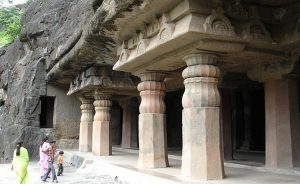
Professional archaeologists and anthropologists in these developing countries face innumerable challenges due to inadequate government support and crumbling infrastructure. Famous Heritage sites in India such as Ajanta and Ellora caves are in a very poor and dilapidated condition and unless timely measures are taken to resuscitate it, this much prized gem of Indian heritage is likely to be lost forever.
A fundamental problem plaguing these countries is the deteriorating standard of education in subjects of humanities and social sciences which is no longer considered to be a lucrative career option due to limited job opportunities and poor pay structures. Most of the youth in India and China today prefer to undertake studies in subjects such as management or engineering with the sole aim of bagging high paying jobs in multinational corporations. Unless steps are taken to revive an interest in the study of humanities and social sciences by creating collaborative programs with international universities, reducing the teacher student ratio to improve quality of engagement, making research grants available for high quality scholarship and making these subjects a viable long term career option the situation is likely to go from bad to worse.
As the scenario currently stands, most government funded universities that offer programs in subjects such as history, sociology, anthropology and archaeology have become silent and incompetent dungeons. The annual student intake is lesser than available capacity due to flagging student interest which has led to hardly any new research and scholarship being produced by these universities. Age old textbook methodologies of teaching without paying attention to evolving global standards produces very sub-standard graduates and has made these universities nothing more than crumbling edifices limited to the extent of fulfilling a social responsibility of churning out graduates who may not possess skills relevant to the trades studied.
The twin task of Heritage restoration (through adequate budget allocations and infrastructure support) and creating conditions for making the study of social sciences a viable career option across the world is very important to revive the fading Heritage of countries that were once the cradles of human civilization, pioneering the evolution of civilized existence. The resuscitation of this legacy becomes a matter of pivotal importance in the modern age of globalization and inter-civilizational dialogue to achieve everlasting peace which has continued to elude mankind forever.
*Azfar Mohammad is an independent analyst, researcher and commentator on Middle Eastern affairs and Islamic Civilization History. Based in Dubai over the past 12 years, he works in the private sector. During the course of his professional career he has traveled extensively across the GCC region, which has given him the opportunity to get a first-hand experience of the economic, social and political landscape. He has extensively studied the region from the foreign policy perspective and is now working on a PhD on the subject.

